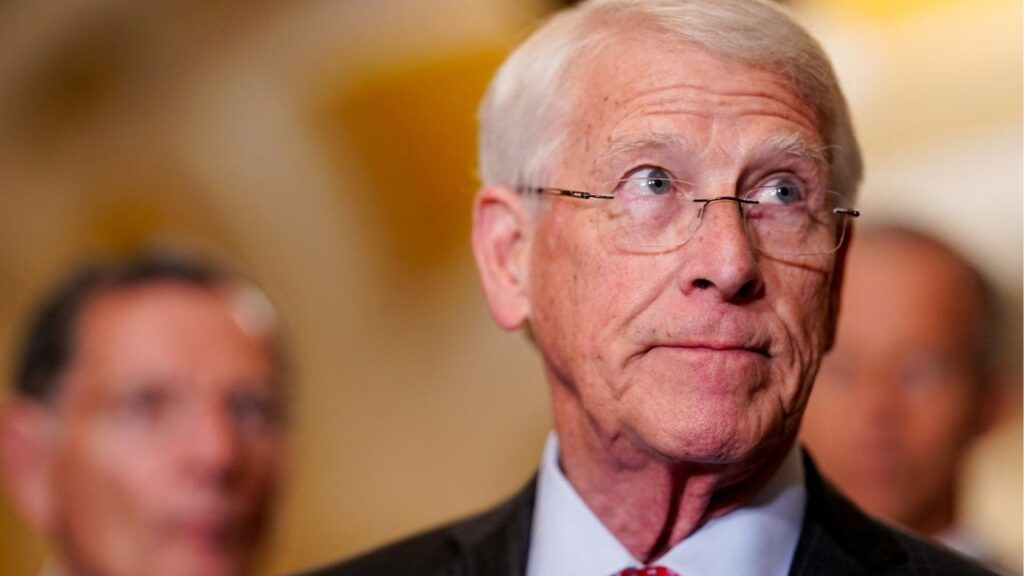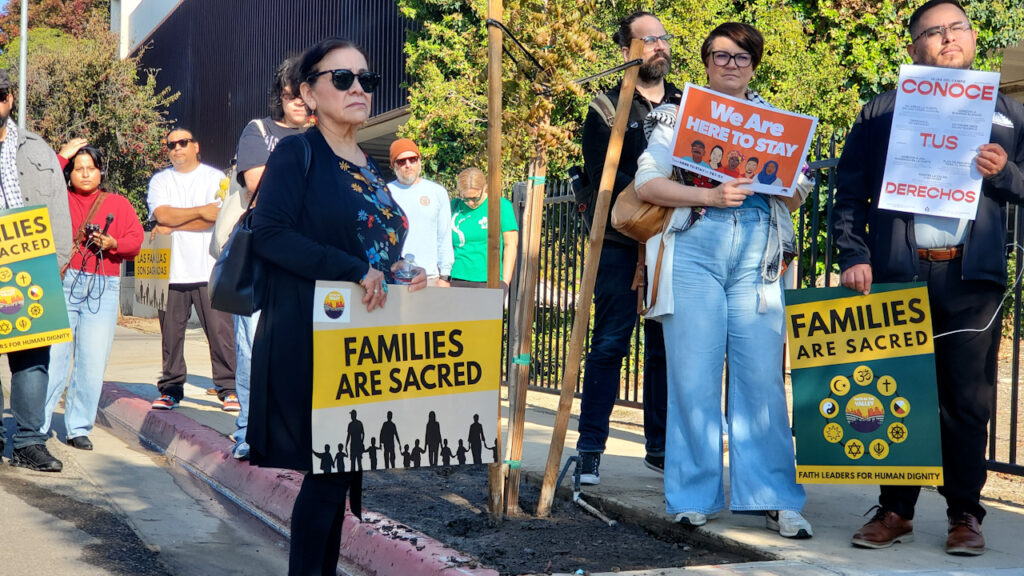California schools face complex process to secure state construction funds from $10 billion bond. (EdSource/Andrew Reed)

- Record 205 school districts that passed bonds in November will compete for limited state matching funds.
- Small districts may struggle with the lengthy, complex process of claiming state funding for construction projects.
- $3.7 billion of the $8.5 billion for TK-12 districts may be available after addressing backlog from previous bond.
Share
|
Getting your Trinity Audio player ready...
|
The record 205 school districts that passed construction bonds in November will spend 2025 vying for matching money from a $10 billion state bond that will meet only a small portion of the demand for financial help.

Lasherica Thornton
EdSource

John Fensterwald
EdSource
Novices at navigating state agencies, especially small districts, may find the process of claiming a share of state funding will be lengthy, complex and potentially overwhelming, said Julie Boesch, administrator for small school district support for the Kern County Superintendent of Schools. Boesch singlehandedly shepherded a renovation project through the funding process as superintendent and principal of Maple Elementary, a one-school district in Kern County.
“Putting out requests for qualifications and for proposals to hire consultants, architects, construction management and then to determine what kind of funding you can get — there are just so many things that have to happen,” she said. “There were times when I, as superintendent, was spending 90% of my time just on facilities.”
The success of Proposition 2, the construction bond for schools and community colleges, with 59% of support, was a vote of renewed confidence in public schools and a rebound from March 2020, when voters defeated a $15 billion bond amid anxiety over the Covid pandemic.
“They understood the need for this,” said Rebekah Kalleen, a legislative advocate with the Coalition for Adequate School Housing (CASH), an organization of school districts and construction and architectural firms that led the effort to pass the proposition. “The funding opportunities will go a long way to ensure that projects are robust and that we’re able to make the repairs and the upgrades that we need.”
(This article originally appeared on EdSource.)
New Money, Old Projects
Proposition 2’s passage will inject a welcome $10 billion on top of the $45 billion in bonds approved for school and community college districts. However, $3.7 billion — less than half of the $8.5 billion allotted to TK-12 districts under Proposition 2 — may be available for local projects approved in November.
That’s because as much as $4.8 billion in unfunded projects with preliminary approval from the last state bond will get priority. This extensive backlog dates back to Proposition 51, which voters passed in 2016. Funding from that bond ran dry several years ago, but under state law, districts could apply through Oct. 31, a week before the vote on Proppsition 2. They could reasonably assume that state funding would eventually become available from the next bond.
“Because there is so much more demand than there is funding, it’s safe to say that there’s always a long pipeline of projects awaiting allocations,” said Sara Hinkley, California program manager for the Center for Cities + Schools at UC Berkeley, which researches school facilities.
Districts submitted plans with preliminary approval for more than 1,000 unfunded projects. These include projects valued at $1.46 billion for new construction and $3.42 billion for modernization. The latter category includes renovations, system upgrades, repairs, and replacement of portable classrooms more than 20 years old and permanent buildings over 25 years old.
Related Story: Can California Keep ICE Away from Schools? Lawmakers Want to Try as Crackdowns ...
One Line Ends, Another Forms
After Proposition 2 money runs out, the remaining projects will form a new line of unfunded projects awaiting state money whenever voters pass the next state bond.
“It is a fair question whether voters understood the degree of the funding backlog and the fact that so much of the Proposition 2 funding would already be spoken for by the time they were voting on their own local bonds in November,” Hinkley said. “What this all really emphasizes is that we are constantly playing catch-up with facilities funding, not coming anywhere close to meeting the actual needs of districts.”
It’s unlikely that all the pending projects will successfully run the gauntlet of state agencies for final approval, although it’s not possible to know how many now.
What follows is a primer on steps districts must take to be eligible for matching money under Proposition 2.
How Will Proposition 2 Money Be Divided?
Under the ballot language that the Legislature passed, Proposition 2 will be apportioned into several categories. It’s too soon to know how funding the previous bond’s unfunded projects will affect Proposition 2 categories.
- $1.5 billion for community colleges. The Legislature and the governor will select specific projects based on recommendations of the community colleges.
- $8.5 billion for TK-12 districts, allocated as follows:
- $4 billion for repairs, replacement of portables at least 20 years old, and other modernization work
- $3.3 billion for new construction
- $600 million for career and technical education facilities
- $600 million for facilities for charter schools
- $115 million to remove lead from school drinking water
Related Story: California Bans Schools From Forcing Teachers to ‘Out’ LGBTQ ...
When Can Districts Apply?
Over the next eight months, the Office of Public School Construction will revise rules to differentiate Proposition 2 from previous state construction bonds. Changes include requiring districts to submit a five-year master plan with an inventory of classrooms, square footage and auxiliary facilities at each school.
Proposition 2 also will set aside 10% of modernization and new construction money for districts with fewer than 2,500 students. But that provision notwithstanding, what hasn’t changed is a first-come, first-served distribution system that can favor property-wealthy districts and large districts, such as Los Angeles Unified (LAUSD) which can afford to employ permanent facilities staff to push their projects to the front of the line.
Kalleen of CASH and others familiar with state facilities grants urge districts to start submitting applications for priority projects now and not wait for more state guidance, in order to avoid getting left behind and ending up on the next waiting list.
“Districts are already planning and looking at their projects and submitting without yet knowing what the regulations will look like because there’s so much pent-up demand for state support for facilities funding,” Kalleen said. “Projects are funded based on the date that they’re received by the Office of Public School Construction. So as long as you meet those eligibility criteria, they’re funded in the order that they’re received.”
Districts won’t have to finish their master plans to initially apply for state funding, although they will have to complete them before receiving state money. They’ll have an opportunity to amend their proposals after the state revises regulations this summer.
Districts that have already completed a master plan with a needs assessment and established priorities “will be ahead of the game,” said Karla DeLeon, senior director-education for Dahlin Architecture, with three offices in California.
A Small Shift Toward Needs-Based Funding
Instead of submitting one application for all of their construction work, districts must apply for each project. The state’s share — at least 50% of the cost for new construction and 60% for a modernization project — will be funded uniformly on a per-student basis.
For an elementary school, for example, the per-student funding for 2024 was $15,770, meaning that building a classroom for 25 students would be $394,250 of base funding. (The per-student amount differs depending on whether a student is in elementary, middle or high school.) The per-student dollar amount is the minimum districts will qualify for, as there could be additional funding through supplemental grants if the project includes certain features.
But for the first time, the state will slightly increase funding for high-poverty, low-property-wealth districts. Huge differences in districts’ taxable property values create disparities in how much they can charge property owners for repairing and building school facilities. To narrow the gap, the state will provide up to 5 percentage points more matching money for qualifying projects based on the proportion of students who are low-income, foster youth, and English learners and, to a lesser extent, on a district’s property wealth per student.
A district could receive a 65% state match for renovations, reducing its contribution to 35%; the maximum contributions for new construction would be 55% state and 45% district.
“The total funding for the project would, in the eyes of the state, remain the same; it’s just more would be on the state’s dime, less on the school district’s dime,” Kalleen said.
Advocates for changing the system say the bonus funding won’t make enough difference to help many districts fully repair or replace subpar and antiquated buildings. The new system “does not meaningfully address the serious equity concerns that we and others have raised about the distribution of state funds,” wrote the Center for Cities + Schools, an institute at UC Berkeley, in an analysis.
How Soon Will Local Bond and Proposition 2 Money Be Available?
When the state and local money becomes available depends. Bonds are loans that are usually paid back over 25 to 30 years. Working with their financial teams, districts will time their borrowing to align with their construction schedule and minimize property tax increases.
The increases cannot exceed a statewide bonding limit of charging property owners more than $40 per $100,000 of assessed property value for school facilities. For many small, low-wealth districts, this is a major obstacle to funding school improvements. For property-wealthy districts, it’s not an issue.
State funding to districts will be disbursed in batches over the next several years. The Legislative Analyst’s Office projects that paying for Proposition 2’s interest and principal will cost the state’s general fund about $500 million per year over 35 years.
What Else Is New Under Proposition 2?
Proposition 2 includes other new features affecting TK-12 districts:
Along with reserving 10% of new construction and modernization funding for districts with fewer than 2,500 students, small districts can receive 5% of a project’s funding to hire architects, engineers and project managers. This should help them speed up the application process.
The state has a financial hardship provision funding the full cost of a project for a district that lacks the property tax base to pay for it. Proposition 2 triples the maximum tax base qualifying from $5 million to $15 million in assessed value.
Proposition 2 does not set aside funding for classrooms specifically equipped for transitional kindergarten (TK), as advocates had hoped, but it does permit districts to seek supplemental funding for TK in a school project. Districts can also seek supplemental money to pay for updating or constructing “essential facilities,” including kitchens, cafeterias, and undersized gyms, and installing energy conservation and efficiency measures like solar panels, outdoor shade areas and more efficient heating and air conditioning units.
Related Story: Fewer Kids Are Going to California Public Schools. Is There a Right Way to ...
What Will the Application Process Be Like?
Districts face a multiagency and multiyear process with hoops to jump through and deadlines to meet before they can receive state funding. All must submit project plans to at least two state agencies before their plans can go to the Office of Public School Construction for a review for funding.
The Division of the State Architect, a group of architects and engineers, will ensure compliance with building codes, structural requirements and safety standards.
The Department of Education ensures “educational adequacy” — whether the facility complies with the state’s education code, meets classroom space requirements by subject and grade as well as how its design handles the needs of special education students, English learners, intervention services and accommodates community events, parking and outdoor activities. Depending on the site location, approval may be needed from the state Department of Toxic Substances Control or review under the California Environmental Quality Act.
DeLeon of Dahlin Architecture recommends turning to experts to guide the process. “You will want a solid team of support to manage all of the balls in the air within the time limits.”
Boesch said her most important advice to districts is to seek pre-approval meetings with state agencies. “Most districts avoid these, because they assume ‘they’ll just tell us to do something different, and it’s easier to ask forgiveness than permission,'” she said. “Truly, it’s not. It’s easier to ask permission and move forward instead of having to go back and undo something that may have been done incorrectly.”
Kalleen said districts can expect the process to take six months to a year for approval from the Office of Public School Construction, depending on the size of the project, and an additional two years or longer to receive funding from the State Allocations Board.
Boesch agreed. “At an absolute minimum, in a perfect world, it really would be two years,” she said, to receive funding, but more likely three or four.
“The backlog is so large that state funds often get to districts after projects have already been completed,” Hinkley said. “Districts that do not have sufficient local funds to cover a project’s costs while waiting for the state backlog are at an enormous disadvantage.”
About the Author
Lasherica Thornton covers education in California’s Central Valley. She was most recently the Engagement Reporter for The Fresno Bee’s Education Lab in Fresno, CA where her reporting earned her a John Swett Award from the California Teachers Association.
John Fensterwald, staff writer, joined EdSource in 2012. Before that, he was editor and co-writer for The Educated Guess website, a leading source of California education policy reporting and opinion, which he founded in 2009.


















